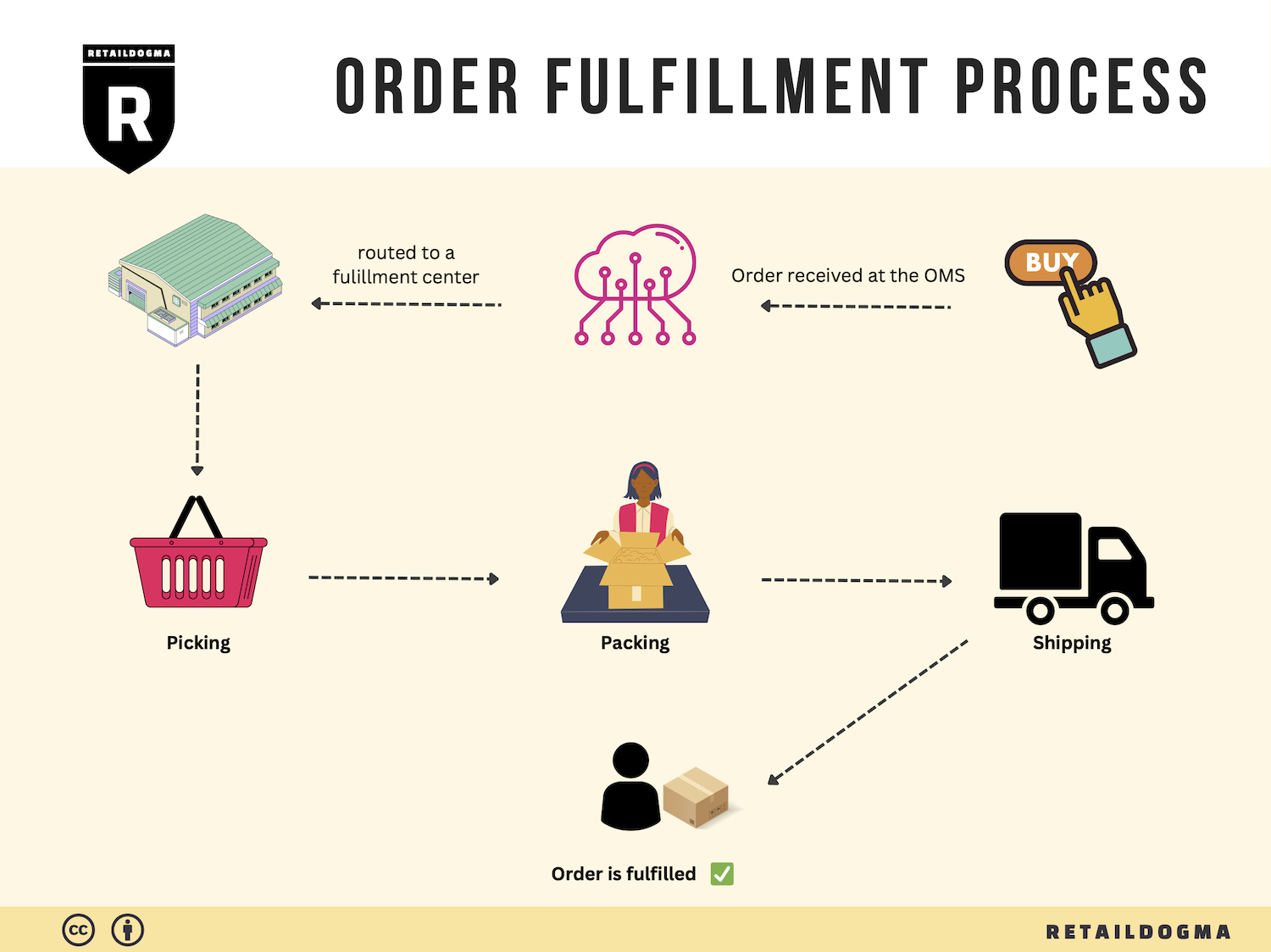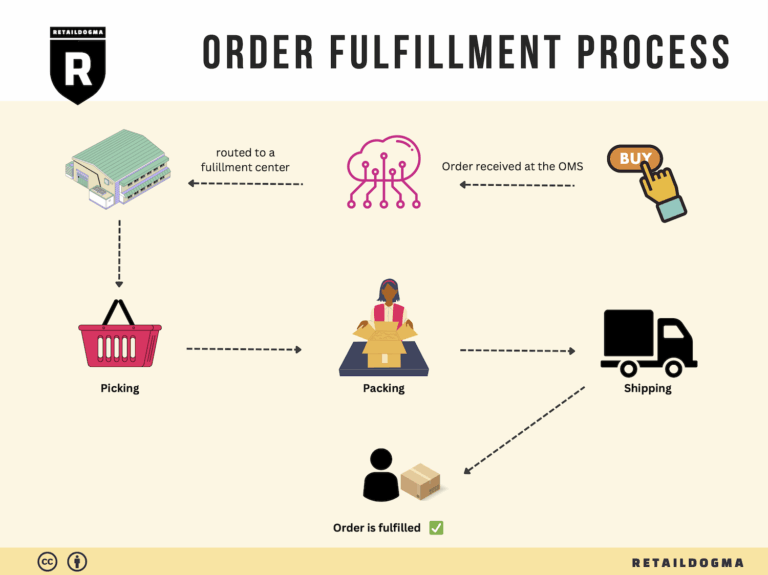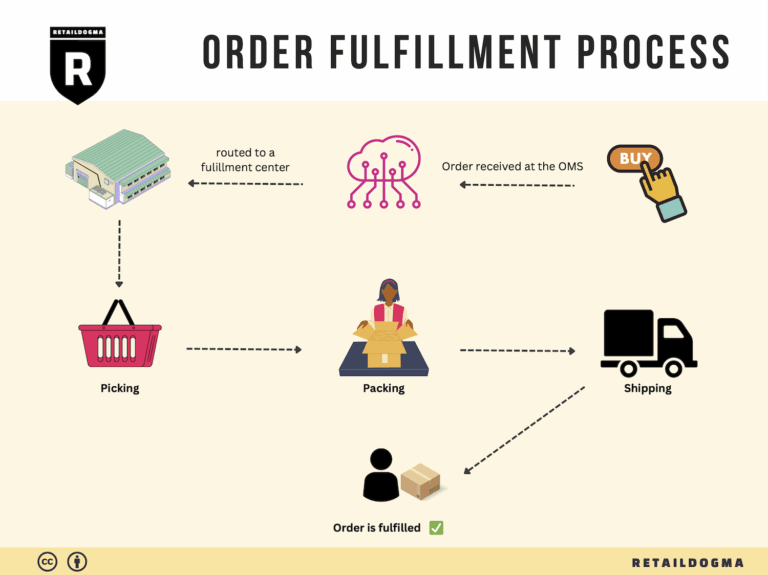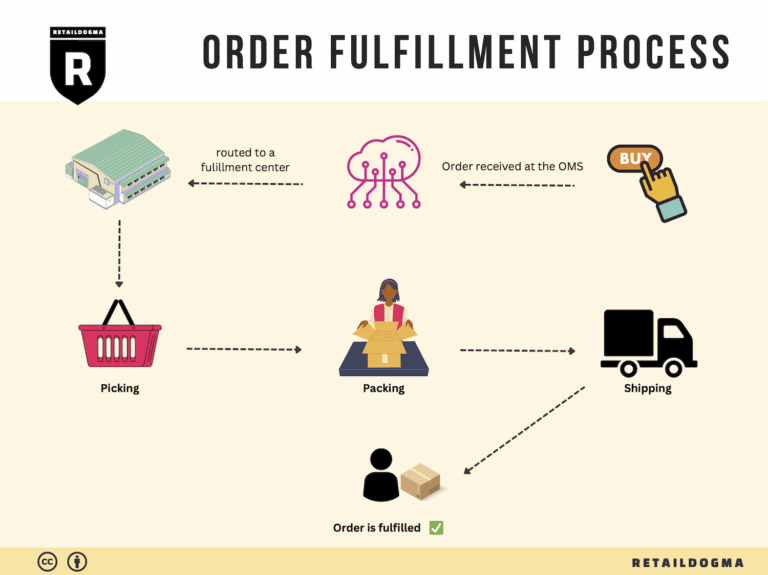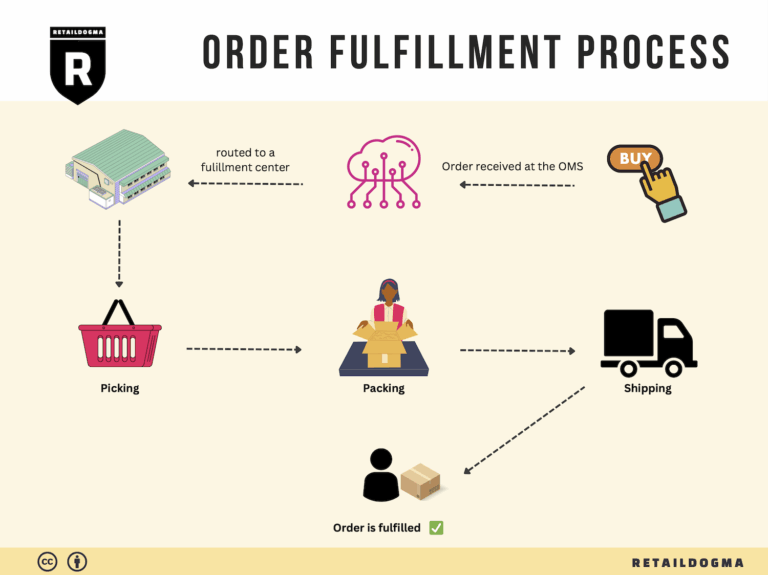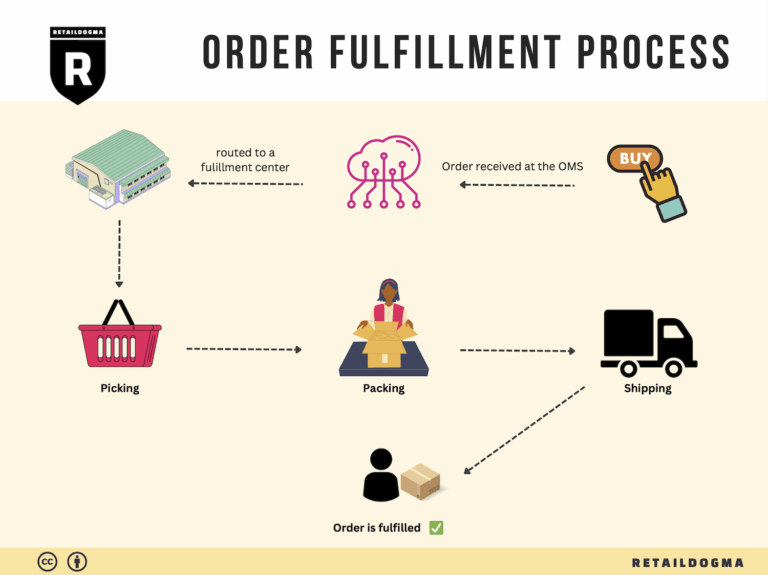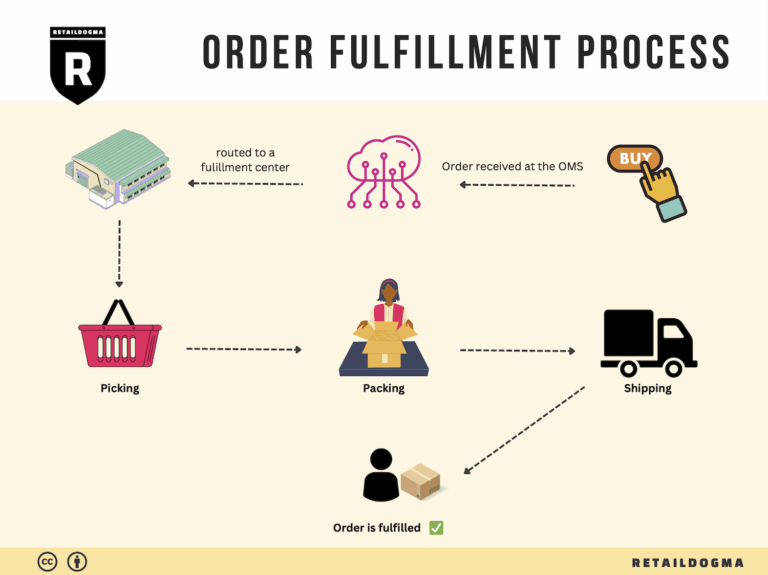What Is A Fulfillment Center? A Complete Guide (2025)
What is E-commerce Fulfillment? An Introduction for Growing Businesses
As your e-commerce business begins to grow, the thrill of increasing sales can quickly become overshadowed by the logistical challenges of packing and shipping orders. Many entrepreneurs find themselves overwhelmed with the intricacies of fulfillment—managing inventory, packing boxes, and ensuring timely deliveries can be a daunting task. This is where understanding e-commerce fulfillment becomes crucial.
Understanding Fulfillment
E-commerce fulfillment is the process of getting a product from your warehouse to your customer’s doorstep. It encompasses everything from receiving inventory, storing products, packing orders, to shipping them out. The efficiency of your fulfillment operations can significantly impact customer satisfaction, repeat purchases, and ultimately, your bottom line.
What This Guide Will Cover
In this guide, we will delve into various fulfillment models that can help streamline your operations. You’ll learn about:
-
Third-Party Logistics (3PL): A popular solution where you outsource your fulfillment processes to specialized providers. This can free up your time and resources, allowing you to focus on growing your business.
-
Fulfillment by Amazon (FBA): This service allows sellers to store their products in Amazon’s fulfillment centers, where Amazon handles packing, shipping, and customer service. It’s a game-changer for many e-commerce businesses looking to tap into Amazon’s vast customer base.
We will also explore the core services included in fulfillment, such as inventory management, order processing, and returns handling.
Choosing the right fulfillment partner is critical for your business’s success. We’ll provide practical tips on what to look for in a logistics partner, including reliability, technology integration, and customer support.
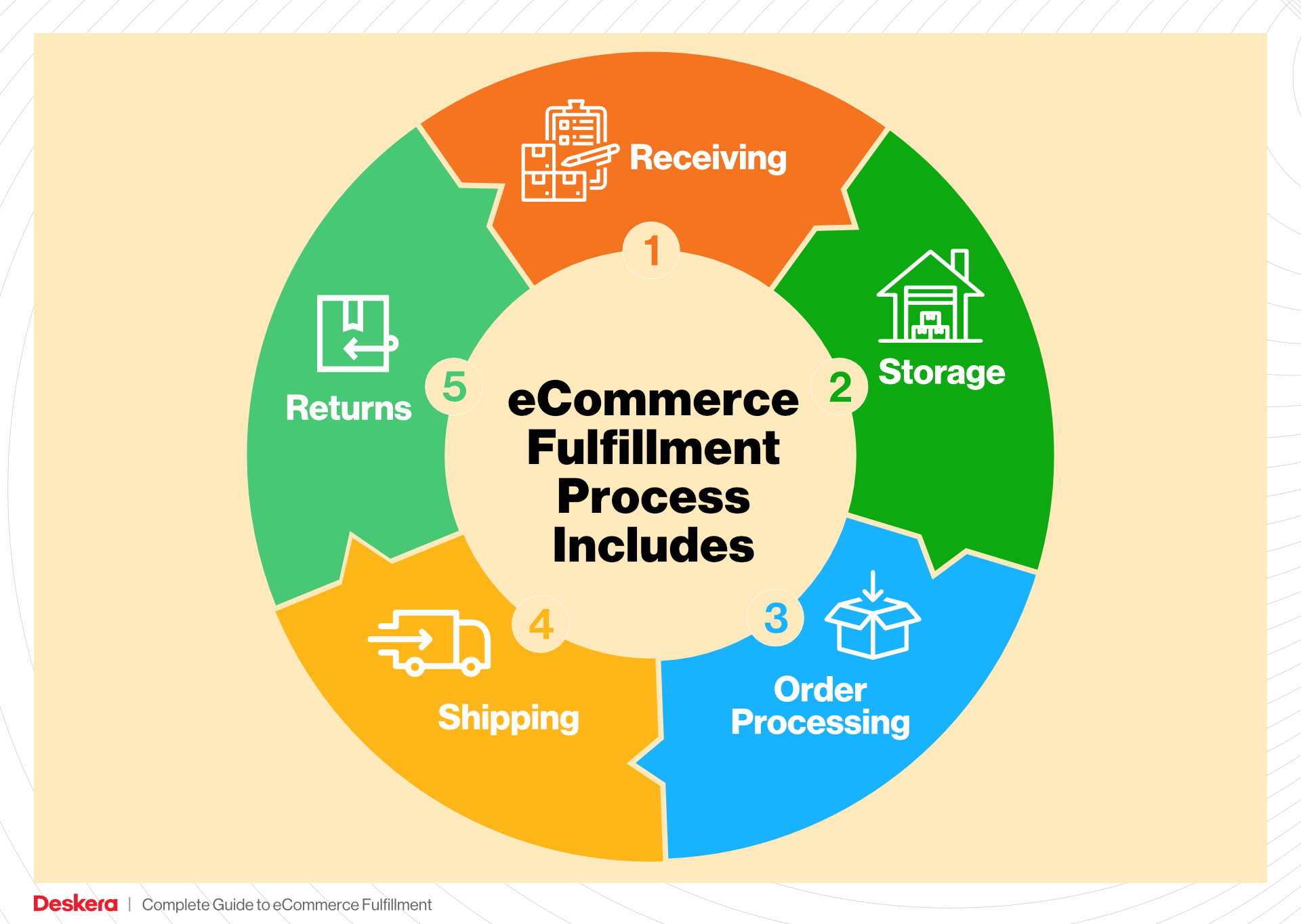
Lastly, we will discuss pricing models associated with fulfillment services. Understanding the costs involved will empower you to make informed decisions that align with your budget and growth goals.
Empowering Your Business
The goal of this guide is to empower you with the knowledge to make smart decisions regarding your logistics operations. By understanding the nuances of e-commerce fulfillment, you can select the right model and partner that suits your unique business needs, ultimately leading to improved efficiency and customer satisfaction. As you navigate the complexities of fulfillment, remember that a strategic approach can turn logistics from a pain point into a competitive advantage.
What You’ll Learn In This Guide
- What is E-commerce Fulfillment? An Introduction for Growing Businesses
- The Order Fulfillment Process: From ‘Buy’ Button to Customer’s Door
- Comparing Fulfillment Models: In-House vs. 3PL vs. Dropshipping
- A Deep Dive into Amazon FBA: Pros, Cons, and Who It’s For
- Core Services Offered by Fulfillment Centers
- How to Choose a Fulfillment Partner: A 6-Point Checklist
- Understanding Fulfillment Pricing: A Breakdown of Common Fees
- Frequently Asked Questions (FAQs) about Fulfillment
- Conclusion: Is Outsourcing Fulfillment the Right Move for Your Business?
- Important Disclaimer
The Order Fulfillment Process: From ‘Buy’ Button to Customer’s Door
1. Receiving Inventory
The first step in the order fulfillment process is the receiving of inventory. When products arrive at the fulfillment center, they undergo a thorough inspection to ensure they meet quality standards and match the ordered quantities. This process involves recording each item’s details, including their SKU (Stock Keeping Unit), which is a unique identifier for each product.
Importance: Accurate receiving is crucial as it sets the foundation for inventory management. Any discrepancies at this stage can lead to stockouts or overstock situations later on, impacting customer satisfaction and operational efficiency.
Key Term: SKU (Stock Keeping Unit) – A unique identifier assigned to each product to facilitate tracking and inventory management.
2. Warehouse Storage
Once the inventory is received and verified, it is strategically stored within the warehouse. This involves categorizing products and placing them in designated storage areas based on factors such as size, weight, and demand frequency. Efficient storage systems, like FIFO (First In, First Out) or LIFO (Last In, First Out), may be employed to optimize inventory turnover.
Importance: Proper storage is vital for maximizing space utilization and ensuring quick access to items when orders come in. A well-organized warehouse minimizes the time spent locating products, which directly contributes to faster fulfillment times.
Key Term: FIFO (First In, First Out) – An inventory management strategy where the oldest stock is sold first to reduce waste and ensure product freshness.
3. Order Picking
When a customer places an order, the fulfillment center initiates the order picking process. This involves generating a pick list, which is a document that details the items and their respective locations in the warehouse. Warehouse staff use this list to locate and collect the ordered products.
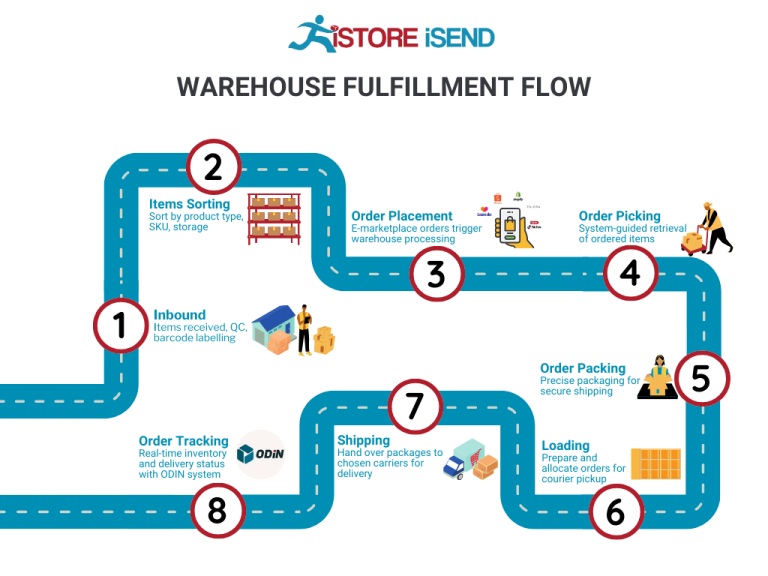
Importance: Effective order picking is essential for fulfilling customer orders accurately and promptly. Errors in picking can lead to incorrect shipments, which can frustrate customers and increase return rates.
Key Term: Pick List – A document that outlines the items to be picked, including their locations, helping staff efficiently gather products for orders.
4. Order Packing
After items are picked, they move to the packing station. Here, products are carefully packed into boxes or envelopes, ensuring they are secure and protected during transit. Packing materials, such as bubble wrap or packing peanuts, may be used to prevent damage. Additionally, packing slips that include order details and return instructions are often included.
Importance: Proper packing is crucial for maintaining product integrity during shipping. It also enhances the unboxing experience for customers, which can influence their perception of the brand.
Key Term: Packing Slip – A document included in the package that outlines the order details, serving as a receipt and providing information for returns.
5. Shipping & Delivery
The final step in the fulfillment process is shipping the packed orders to customers. Fulfillment centers typically collaborate with various carriers to determine the most efficient and cost-effective shipping methods. Once shipped, tracking information is provided to customers, enabling them to monitor their orders in real-time.

Importance: Timely delivery is a key factor in customer satisfaction. Efficient shipping processes can lead to faster delivery times, which are increasingly expected by consumers in today’s e-commerce landscape.
Key Term: Tracking Information – A unique identifier that allows customers to track their shipment’s progress, enhancing transparency and customer trust.
In conclusion, understanding and optimizing each step of the order fulfillment process—from receiving inventory to shipping and delivery—can significantly impact your business’s operational efficiency and customer satisfaction levels. By implementing best practices in each phase, e-commerce businesses can scale effectively and maintain a competitive edge in the marketplace.
Comparing Fulfillment Models: In-House vs. 3PL vs. Dropshipping
Comparison of Fulfillment Models
| Model | Who Handles Inventory | Best For (Business Stage) | Key Advantage | Key Disadvantage |
|---|---|---|---|---|
| In-House Fulfillment | The business itself | Established businesses | Full control over inventory and processes | High overhead costs |
| Third-Party Logistics (3PL) | A third-party provider | Growing businesses | Scalability and flexibility | Less control over inventory |
| Dropshipping | Supplier | Startups and small businesses | Low upfront investment | Lower profit margins and longer lead times |
In-House Fulfillment
In-house fulfillment involves managing the entire logistics process within the business itself. This model is typically best suited for established businesses that have the resources and infrastructure to handle their own inventory management, packing, and shipping. The key advantage of in-house fulfillment is the complete control it offers over inventory and order processes. Businesses can customize packaging, manage inventory levels precisely, and respond quickly to customer needs. However, this model comes with significant disadvantages, primarily high overhead costs associated with warehousing, labor, and logistics management. Additionally, as order volume increases, the complexity of operations can lead to inefficiencies unless the business invests in advanced technology and processes.
Third-Party Logistics (3PL)
Third-party logistics (3PL) providers offer a middle-ground solution for businesses looking to scale without the burden of managing logistics on their own. With a 3PL, inventory handling, storage, and shipping are outsourced to a specialized provider. This model is particularly advantageous for growing businesses that may not yet have the resources for an in-house operation but need flexibility and scalability as they expand. The key advantage of using a 3PL is the ability to scale operations quickly, allowing businesses to focus on core activities such as marketing and product development. However, the downside includes a loss of direct control over inventory management and potential communication challenges between the business and the 3PL provider, which can impact customer service and fulfillment speed.
Dropshipping
Dropshipping is a fulfillment model where the retailer does not hold inventory but instead relies on suppliers to ship products directly to customers. This model is ideal for startups and small businesses with limited upfront capital, as it requires minimal investment in inventory. The primary advantage of dropshipping is the low barrier to entry, allowing entrepreneurs to test markets and product viability without significant financial risk. However, the model also has notable drawbacks, including lower profit margins due to reliance on suppliers for pricing and fulfillment, as well as longer lead times that can affect customer satisfaction. Additionally, issues related to inventory management can arise, as retailers have less visibility into stock levels and availability from suppliers.
Conclusion
Choosing the right fulfillment model is crucial for e-commerce businesses looking to scale effectively. Each model—whether in-house fulfillment, third-party logistics, or dropshipping—has its unique advantages and disadvantages that must align with a company’s operational capacity, growth stage, and strategic objectives. Businesses should carefully evaluate their current needs and future goals when selecting a fulfillment strategy to ensure they can meet customer expectations while maintaining profitability.
A Deep Dive into Amazon FBA: Pros, Cons, and Who It’s For
Understanding Fulfillment by Amazon (FBA)
Fulfillment by Amazon (FBA) is a service provided by Amazon that allows e-commerce sellers to store their products in Amazon’s fulfillment centers. Amazon takes care of storage, packing, shipping, and customer service, allowing sellers to focus on other aspects of their business. When a customer orders a product, Amazon picks, packs, and ships it on behalf of the seller. This service offers sellers a powerful way to leverage Amazon’s extensive logistics network and customer base.
How FBA Works
-
Setting Up an Account: To use FBA, sellers must create an Amazon seller account. Once registered, they can list their products and choose which ones they want to fulfill through FBA.
-
Shipping Inventory: Sellers prepare their products and ship them to Amazon’s fulfillment centers. This involves labeling products according to Amazon’s specifications to ensure they are tracked correctly.
-
Storage: Once the inventory arrives at the fulfillment center, it is stored in Amazon’s warehouses. Products are organized in a way that optimizes space and facilitates quick retrieval.
-
Order Processing: When a customer places an order, Amazon handles the picking, packing, and shipping. Products are shipped directly from the fulfillment center to the customer, often with Amazon Prime shipping options.
-
Customer Service: Amazon also manages customer inquiries and returns, providing a seamless experience for both sellers and buyers.
-
Payment: After the sale is made, Amazon disburses payments to sellers, minus FBA fees, typically on a bi-weekly basis.
Pros of Using FBA
-
Prime Eligibility: Products fulfilled through FBA are eligible for Amazon Prime. This can significantly increase sales, as Prime members tend to purchase more frequently due to the free two-day shipping.
-
Customer Trust: Leveraging Amazon’s reputation can enhance customer trust. When customers see that a product is fulfilled by Amazon, they may feel more confident in their purchase, leading to higher conversion rates.
-
Multi-Channel Fulfillment: Sellers can use FBA to fulfill orders from other sales channels, not just Amazon. This allows for a streamlined logistics process across different platforms, making inventory management simpler.
-
Scalability: FBA allows businesses to scale quickly without the need for significant investment in warehousing or logistics. As demand grows, sellers can easily send more inventory to Amazon.
-
Time Savings: By outsourcing fulfillment, sellers can focus more on product development, marketing, and customer engagement rather than the intricacies of order fulfillment.
Cons of Using FBA
-
High Fees: FBA services come with various fees, including storage fees for inventory held in Amazon’s warehouses and fulfillment fees for each unit sold. These costs can add up, particularly for low-margin products.
-
Strict Inventory Rules: Amazon has specific rules regarding inventory management, including limits on the number of units that can be stored. Sellers must also adhere to strict guidelines regarding the condition and labeling of products.
-
Commingling Risks: FBA products may be commingled with other sellers’ inventory. This means that if a customer returns a damaged item, it could potentially affect your inventory as well, leading to possible losses and complications in tracking your products.
-
Loss of Control: Sellers relinquish control over the shipping process and customer service experience. If there are issues with shipping or product quality, it can reflect poorly on the seller, even if they had no direct involvement.
-
Increased Competition: Since many sellers use FBA, there can be intense competition for visibility on Amazon. This can lead to price wars that erode profit margins.
Who is FBA Best For?
Fulfillment by Amazon is particularly advantageous for:
-
Small to Medium-Sized Businesses: Companies that may not have the resources to manage their own warehousing and logistics can benefit significantly from FBA.
-
Startups: New businesses looking to establish themselves on Amazon can leverage FBA to gain credibility and access to a large customer base without the upfront costs of fulfillment infrastructure.
-
Sellers with High Sales Volume: Businesses that have consistent sales can benefit from the economies of scale that FBA offers, allowing them to maximize their profit margins.
-
Brands Looking to Expand: Established brands looking to reach new customers can use FBA to streamline their operations and tap into Amazon’s vast distribution network.
-
Multi-Channel Sellers: Businesses selling on multiple platforms can simplify their logistics through FBA, allowing them to manage their inventory more efficiently.
In conclusion, while FBA presents a powerful opportunity for e-commerce sellers to enhance their reach and operational efficiency, it is crucial to weigh the pros and cons carefully. Understanding the specific needs of your business and how FBA aligns with your growth strategy will be key to making an informed decision.
Core Services Offered by Fulfillment Centers
Inventory Management & Warehousing
Inventory management and warehousing are foundational services provided by fulfillment centers. This process involves the systematic tracking of inventory levels, orders, sales, and deliveries. Fulfillment centers utilize sophisticated inventory management systems that allow businesses to monitor stock in real-time, ensuring that they can quickly respond to customer demands.
Benefits:
1. Optimized Stock Levels: By maintaining accurate inventory records, e-commerce businesses can avoid overstocking or stockouts, reducing storage costs and increasing sales opportunities.
2. Improved Accuracy: Automated inventory systems minimize human error, ensuring that the inventory data reflects the actual stock available, which is crucial for maintaining customer trust and satisfaction.
3. Streamlined Operations: Efficient inventory management allows businesses to plan better for seasonal demands and promotional events, enhancing overall operational efficiency.
Pick and Pack Services
Pick and pack services are essential for e-commerce businesses that require efficient order fulfillment. This service involves selecting items from the warehouse (picking) and preparing them for shipment (packing). Fulfillment centers use advanced technology and trained staff to ensure that orders are accurately picked and packaged, ready for delivery to customers.
Benefits:
1. Speed and Efficiency: Fulfillment centers specialize in high-volume order processing, which significantly reduces the time it takes to fulfill orders compared to in-house operations. This is critical for businesses that promise fast shipping.
2. Custom Packaging Options: Many fulfillment centers offer custom packaging solutions that enhance branding and customer experience, such as branded boxes or personalized notes, which can lead to increased customer loyalty.
3. Scalability: As e-commerce businesses grow, fulfillment centers can easily scale their pick and pack services to meet increasing order volumes without compromising speed or accuracy.
Kitting and Assembly
Kitting and assembly refer to the process of grouping individual items into ready-to-sell sets or kits. This service is particularly beneficial for businesses that sell multi-item products or bundles. Fulfillment centers take care of assembling these kits, allowing businesses to offer customers packaged deals or promotional items that enhance perceived value.
Benefits:
1. Enhanced Product Offerings: By offering bundled products, businesses can increase average order value and attract more customers looking for convenience and savings.
2. Reduced Operational Burden: Outsourcing kitting and assembly allows e-commerce businesses to focus on core activities such as marketing and customer service while leaving the logistics to the fulfillment center.
3. Quality Control: Fulfillment centers typically have stringent quality control processes in place, ensuring that assembled products meet quality standards before they are shipped to customers, thus reducing returns and enhancing customer satisfaction.
Returns Management (Reverse Logistics)
Returns management, also known as reverse logistics, is a critical service that handles the process of returning products from customers back to the fulfillment center. Effective returns management is essential for maintaining customer satisfaction and minimizing losses associated with returned goods. Fulfillment centers provide comprehensive solutions for processing returns, including inspection, restocking, and refurbishing items as needed.
Benefits:
1. Streamlined Return Processes: A well-managed returns system makes it easy for customers to return items, improving their overall shopping experience and increasing the likelihood of repeat purchases.
2. Cost Efficiency: Fulfillment centers can efficiently process returns, reducing the costs associated with handling returns in-house. They can also assess returned items and determine the best way to restock or dispose of them, minimizing losses.
3. Data Insights: Returns management provides valuable data about customer preferences and product issues. Businesses can analyze return reasons to improve product quality, adjust inventory, and refine marketing strategies.
In conclusion, partnering with a fulfillment center like Amazon MEM4 can significantly enhance an e-commerce business’s operational efficiency and customer satisfaction. By leveraging core services such as inventory management, pick and pack, kitting, and returns management, businesses can focus on growth while ensuring that logistics are handled professionally and effectively.
How to Choose a Fulfillment Partner: A 6-Point Checklist
Location & Warehouse Network
Importance: The geographical location of your fulfillment partner is crucial for minimizing shipping times and costs. A partner with warehouses strategically located near your customer base can significantly enhance delivery speed, which is a key factor in customer satisfaction.
Questions to Ask:
– Where are your warehouses located, and how many do you operate?
– What is the average shipping time to major markets from your facilities?
– Do you have a network that allows for regional distribution, and how does it benefit my business?
Technology & Integrations
Importance: In today’s e-commerce landscape, technology plays a vital role in streamlining operations. A fulfillment partner should offer robust technology that integrates seamlessly with your existing systems (e.g., e-commerce platforms, inventory management tools).
Questions to Ask:
– What technology do you use for inventory management, order processing, and tracking?
– Can your system integrate with my e-commerce platform (like Shopify, WooCommerce, etc.)?
– How do you handle data security and system uptime?
Specializations (e.g., cold storage, oversized items)
Importance: Depending on the nature of your products, you may need a partner that specializes in certain areas, such as cold storage for perishables or facilities that can handle oversized or heavy items. Selecting a partner with the right expertise ensures that your products are stored and handled correctly.
Questions to Ask:
– Do you have specialized facilities for my product type (e.g., temperature-controlled storage)?
– What experience do you have with handling my specific product category?
– How do you ensure compliance with regulations related to my product type?
Scalability & Capacity
Importance: As your business grows, your fulfillment needs will change. A suitable partner should have the capacity to scale operations up or down based on your seasonal demand fluctuations and growth trajectory.
Questions to Ask:
– How do you handle peak seasons or sudden spikes in order volume?
– What is your current capacity, and how quickly can you scale operations if needed?
– Can you provide examples of how you’ve supported clients during periods of rapid growth?
Pricing and Contracts
Importance: Understanding the pricing structure and contract terms is essential to avoid unexpected costs and ensure that your partnership remains financially viable as your business evolves.
Questions to Ask:
– What is included in your pricing model (storage fees, pick and pack fees, shipping costs)?
– Are there any additional charges I should be aware of (e.g., for returns, special handling)?
– What are the contract terms, and do you offer flexibility for changes as my business needs evolve?
Customer Support & Reviews
Importance: Exceptional customer support can make a significant difference in your fulfillment operations. A partner that is responsive and helpful can mitigate issues quickly, ensuring your business runs smoothly.
Questions to Ask:
– What customer support channels do you offer (e.g., phone, email, chat)?
– What are your response times for support requests?
– Can you provide references or reviews from other clients to gauge your reliability and service quality?
Conclusion
Choosing the right fulfillment partner is a critical decision that can significantly impact your e-commerce business’s efficiency and customer satisfaction. By using this checklist, you can ensure that you select a partner that aligns with your operational needs and growth ambitions. Make sure to conduct thorough due diligence, ask pointed questions, and consider your specific business requirements to find a fulfillment partner that can help you scale successfully.
Understanding Fulfillment Pricing: A Breakdown of Common Fees
Initial Setup Fees
When partnering with a fulfillment center, the first cost you may encounter is the initial setup fee. This fee covers the administrative work required to onboard your business into the fulfillment system. It typically includes account setup, integration with your e-commerce platform, and initial inventory management configuration.
The calculation of initial setup fees can vary widely based on the complexity of your business needs and the fulfillment center’s pricing structure. Some centers may charge a flat fee, while others might assess charges based on the number of SKUs (stock keeping units) you have or the specific services you require. It’s essential to ask for a detailed breakdown of what this fee includes to avoid unexpected costs.
Receiving Fees
Receiving fees are charged when your products are delivered to the fulfillment center. This fee generally covers the labor and resources needed to unload, inspect, and store your inventory.
The calculation for receiving fees can vary based on several factors, including the volume of inventory being received and the complexity of handling. Typically, fulfillment centers may charge a per-pallet fee or a per-box fee. For example, if you send a large shipment, the cost may be lower per unit than sending smaller, multiple shipments. Understanding these dynamics can help you optimize your shipping strategy to minimize receiving costs.
Storage Fees (per pallet/bin)
Once your inventory is stored in the fulfillment center, you will incur storage fees. These fees are typically calculated on a monthly basis and can be based on the space your products occupy, measured in pallets or bins.
Storage fees can vary based on the type of items stored. For example, larger or bulk items may incur higher fees than smaller, standard-sized products. Additionally, some fulfillment centers charge different rates for standard storage and long-term storage, with long-term items incurring additional fees if they remain in the warehouse beyond a specified period. Keeping track of inventory turnover can help manage these costs effectively.
Pick & Pack Fees (per item/order)
Pick and pack fees are a crucial component of fulfillment pricing, as they directly relate to the processing of customer orders. This fee is charged for the labor involved in selecting the items from inventory (picking) and packaging them for shipment (packing).
The calculation for pick and pack fees can vary depending on whether you are charged per item or per order. For instance, some fulfillment centers may charge a flat fee for each order processed, while others might charge based on the number of items within each order. Understanding your order volume and average order size can aid in estimating these costs and finding a fulfillment partner that aligns with your business model.
Shipping Fees
Shipping fees encompass the costs associated with delivering the packed orders to your customers. These fees can be influenced by various factors, including the shipping method chosen (e.g., standard, expedited), the destination, and the weight or dimensions of the package.
Fulfillment centers often negotiate shipping rates with carriers, and these costs can be passed on to you. Some centers may offer discounted rates based on their volume with carriers, which can be advantageous for your business. It’s important to clarify whether shipping fees are included in the pick and pack fees or charged separately to avoid any surprises.
Tips for Getting an Accurate Quote
-
Clearly Define Your Needs: Before requesting quotes, outline your specific fulfillment needs, including inventory size, order volume, and shipping requirements. This information will help fulfillment centers provide tailored quotes.
-
Ask for Detailed Breakdown: Ensure that any quote received includes a detailed breakdown of all potential fees. This should cover initial setup, receiving, storage, pick and pack, and shipping fees.
-
Consider Seasonal Variability: If your business experiences seasonal fluctuations, ask how fees may change during peak periods. Some centers may have different pricing structures for busy seasons.
-
Negotiate Terms: Don’t hesitate to discuss pricing and terms with potential fulfillment partners. Many centers are willing to negotiate fees, especially if you can demonstrate a significant order volume.
-
Review Contracts Thoroughly: Before signing any agreements, review the contracts carefully to ensure all fees and terms are clearly outlined and understood. Look for hidden fees or clauses that could impact costs.
By understanding these common fulfillment pricing models and taking proactive steps to obtain accurate quotes, you can make informed decisions that align with your business goals and help scale your operations efficiently.
Frequently Asked Questions (FAQs) about Fulfillment
1. What is Amazon Fulfillment Center MEM4?
Amazon Fulfillment Center MEM4, located at 4055 Allen Pkwy, Memphis, TN, is a large-scale facility that specializes in the storage, packing, and shipping of a diverse range of products for Amazon. It plays a crucial role in ensuring timely delivery to customers throughout the region and beyond, focusing on efficiency and speed in its operations.
2. How does Amazon Fulfillment Center MEM4 differ from a traditional warehouse?
While both fulfillment centers and traditional warehouses store products, a fulfillment center like MEM4 is specifically designed to handle order processing and shipping directly to customers. This involves picking, packing, and shipping products in response to customer orders, whereas a traditional warehouse may focus primarily on inventory storage without the same level of order fulfillment services.
3. What services does Amazon Fulfillment Center MEM4 provide?
Amazon Fulfillment Center MEM4 provides a variety of services including inventory storage, order picking, packing, shipping, returns processing, and customer service support. The center is optimized for fast and efficient order processing to enhance customer satisfaction.
4. What is a 3PL and how does it relate to fulfillment centers?
A 3PL, or third-party logistics provider, offers outsourced logistics services that include transportation, warehousing, and fulfillment. Fulfillment centers like MEM4 can be considered a type of 3PL, as they manage the logistics of storing products and fulfilling orders on behalf of e-commerce businesses.
5. How much do fulfillment services cost at Amazon Fulfillment Center MEM4?
Costs for fulfillment services at MEM4 can vary based on several factors, including the size and weight of the products, the volume of orders, and specific service requirements. Typically, fulfillment costs include storage fees, picking and packing fees, and shipping charges. It is advisable for businesses to consult with Amazon or their fulfillment partners to get a tailored quote based on their specific needs.
6. What types of products can be stored at Amazon Fulfillment Center MEM4?
MEM4 can store a wide range of products, from electronics and clothing to household items and consumables. However, certain restrictions apply to hazardous materials, perishables, and oversized items. Businesses should check Amazon’s guidelines to ensure compliance with storage policies.
7. How does Amazon ensure the accuracy of orders shipped from MEM4?
Amazon employs advanced technology and automation systems to track inventory and manage order fulfillment processes. These systems include barcode scanning, real-time inventory management, and quality control checks to minimize errors and ensure that the correct items are shipped to customers.
8. Can I use Amazon Fulfillment Center MEM4 for international shipping?
Yes, Amazon Fulfillment Center MEM4 can facilitate international shipping for eligible products. Businesses should check Amazon’s policies and the specific requirements for international orders, as additional fees and regulations may apply.
9. How can businesses integrate their operations with Amazon Fulfillment Center MEM4?
Businesses can integrate their operations with MEM4 by using Amazon’s Fulfillment by Amazon (FBA) program. This program allows sellers to store their products in Amazon’s fulfillment centers, where Amazon takes care of storage, packaging, and shipping. Sellers can manage their inventory and orders through the Amazon Seller Central platform.
10. What support does Amazon Fulfillment Center MEM4 offer to businesses?
Amazon Fulfillment Center MEM4 provides various support services to businesses, including customer service assistance, inventory management tools, and reporting analytics. These resources help businesses track performance, manage stock levels, and improve overall operational efficiency.
Conclusion: Is Outsourcing Fulfillment the Right Move for Your Business?
The Benefits of Outsourcing Fulfillment
Outsourcing fulfillment can be a transformative decision for e-commerce businesses looking to scale operations effectively. One of the most significant advantages is the substantial time savings it offers. By partnering with a fulfillment center, such as Amazon Fulfillment Center-MEM4 in Memphis, TN, businesses can redirect their focus from logistics and warehousing to core activities like marketing and product development. This shift not only enhances productivity but also fosters innovation and growth.
Scalability is another critical benefit of utilizing a fulfillment service. As your sales volume increases, a reliable fulfillment partner can seamlessly accommodate your growing needs without the need for significant capital investment in infrastructure. This flexibility allows businesses to respond quickly to market demands and seasonal fluctuations, ensuring that you can meet customer expectations consistently.
Moreover, leveraging the expertise of a fulfillment provider can significantly enhance operational efficiency. Established fulfillment centers often employ advanced technology and best practices that smaller businesses may not have the resources to implement. This expertise can result in faster order processing, improved inventory management, and ultimately, higher customer satisfaction.
Choosing the Right Partner
Selecting the right fulfillment partner is crucial for sustainable growth. It’s essential to assess potential providers based on their service offerings, technology capabilities, and track record in handling logistics for businesses similar to yours. A strong partnership can provide not just fulfillment services but also strategic insights that drive your business forward.
Next Steps
To determine if outsourcing fulfillment is the right move for your business, consider conducting an audit of your current shipping processes. Evaluate the time and resources currently allocated to logistics and identify areas for improvement. This assessment will not only clarify whether a fulfillment partner could enhance your operations but also help you make informed decisions that align with your growth objectives. Embrace the opportunity to scale efficiently and enhance your competitive edge in the e-commerce landscape.
Important Disclaimer
⚠️ Important Disclaimer
The information in this guide is for educational purposes. Fulfillment services, pricing, and platform features change frequently. Always conduct your own due diligence and consult with providers directly before making business decisions.
